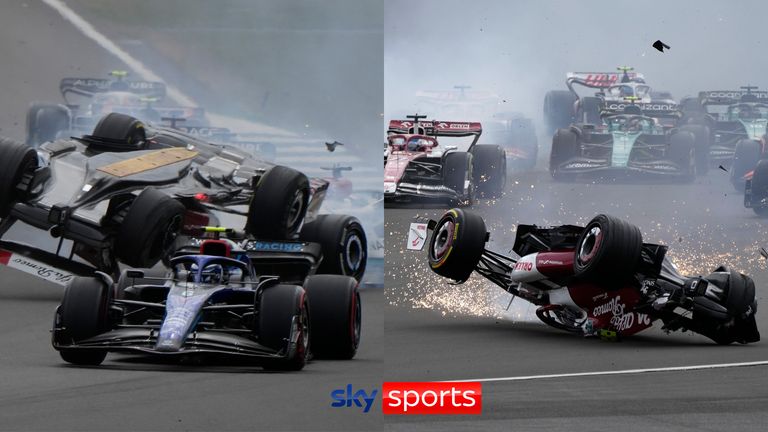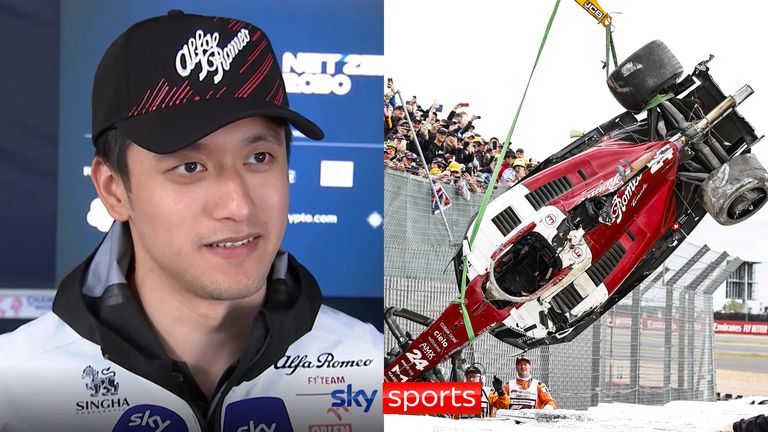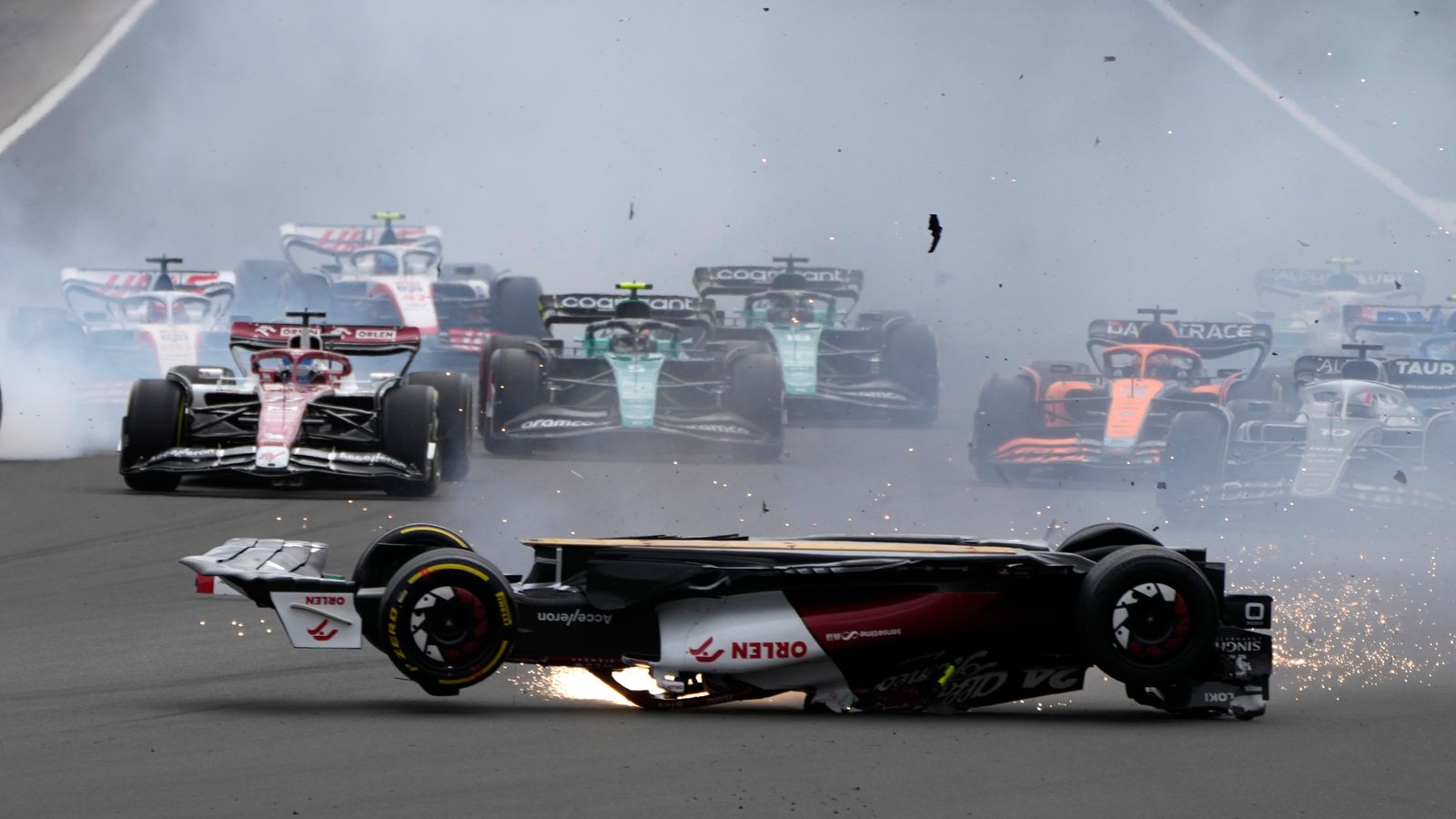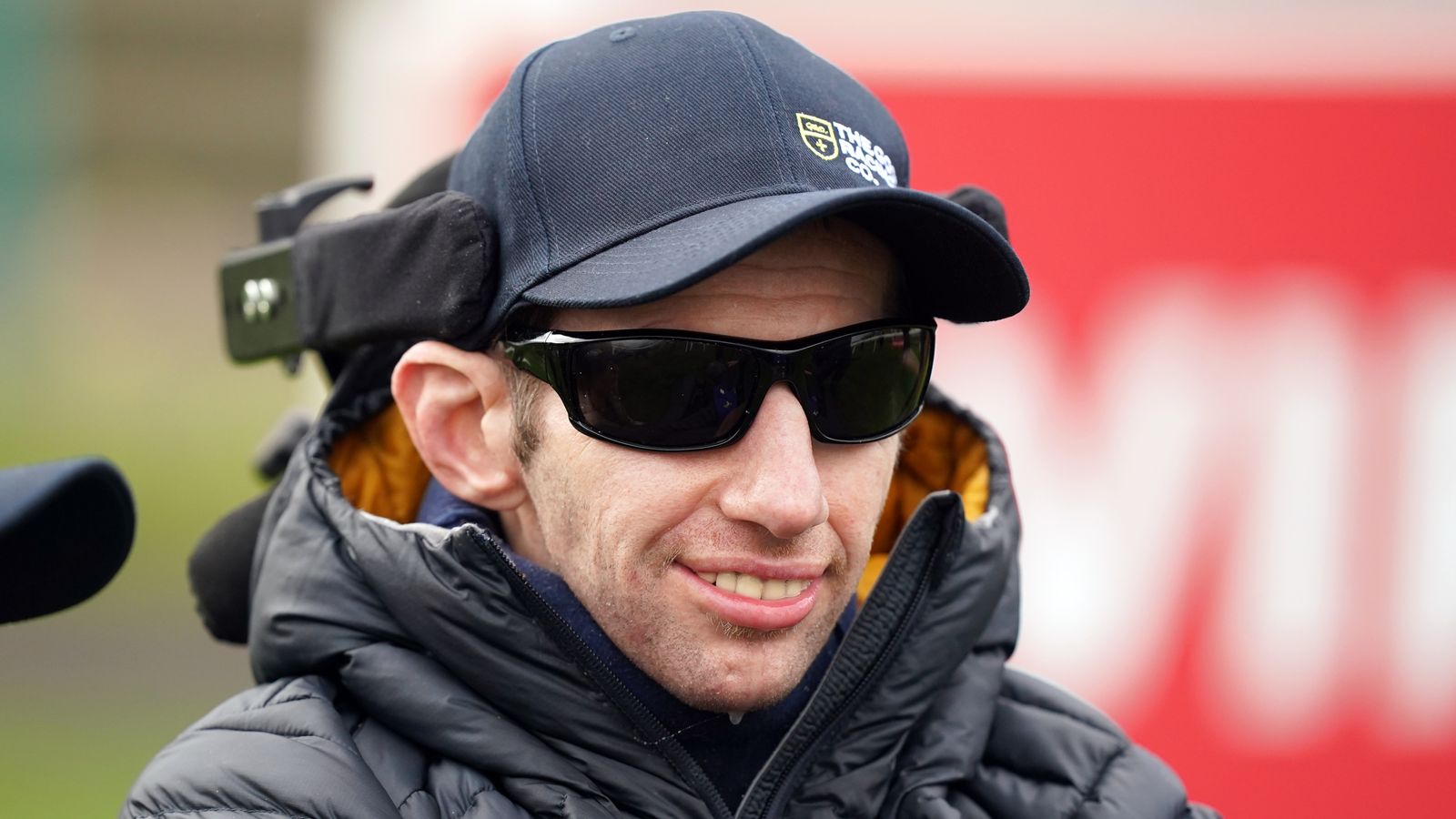FIA to introduce tougher tests on roll hoops for 2023
FIA statement: “The teams confirmed their availability to introduce more stringent measures on the roll hoops for 2023, and the FIA undertook to complete the relevant analyses and to communicate to the teams new requirements for the safety of the roll hoop”
Last Updated: 15/07/22 2:31pm

Zhou Guanyu was involved in a frightening crash at the start of the British Grand Prix when his Alfa Romeo flipped upside down and went over the safety barriers
Zhou Guanyu was involved in a frightening crash at the start of the British Grand Prix when his Alfa Romeo flipped upside down and went over the safety barriers
The FIA will introduce tougher tests on the roll hoops of cars next season as a result of Zhou Guanyu’s British Grand Prix crash.
Zhou was involved in one of F1’s scariest accidents as his car was flipped over by contact at the start of the race at Silverstone, before hurtling through the gravel and then launching over the tyre barriers. It was then trapped in a small gap in front of the catch fencing and spectators.
After a nervous wait, Zhou was eventually recovered from the car and, incredibly, was cleared of any significant injuries.
The FIA said its Technical Advisory Committee (TAC) met on Thursday representing the teams, governing body and commercial rights holders.
“The teams confirmed their availability to introduce more stringent measures on the roll hoops for 2023, and the FIA undertook to complete the relevant analyses and to communicate to the teams new requirements for the safety of the roll hoop,” it said.

Zhou Guanyu discusses how he got out of his Alfa Romeo following his horrifying crash at Silverstone
The TAC also discussed the vertical oscillation of cars, commonly known as ‘porpoising’ – bouncing at speed like the movement of a porpoise through water. The aerodynamic phenomenon has been a consequence of this year’s major rules overhaul.
Mercedes have been particularly affected, although they appear to have resolved some of the worst effects, and the FIA warned there was a risk of a more serious problem next season.
“While the issue has been seemingly reduced in the last few races, they took place at circuits where the effect is expected to be lower than normal,” the governing body explained.

Ted Kravitz looks back at an epic race at the Red Bull Ring for the Austrian Grand Prix
“Races where this effect is expected again to be higher will take place in the coming months.
“While the teams are understanding more and more how to control the issue, the tendency for 2023, with the cars developing more downforce, will most likely be a worsening of the effect.”
It said measures to be put in place from next month’s Belgian Grand Prix were not necessarily a long-term fix and the FIA would introduce further changes for 2023.
They included raising the floor edges of cars by 25mm, more stringent lateral floor deflection tests and a more accurate sensor “to help quantify the aerodynamic oscillation.”





Pingback: funny post
Pingback: acid balance pills,
Pingback: ccaps.net
Pingback: click the up coming document
Pingback: ติดเน็ตบ้าน AIS
Pingback: special offers
Pingback: altogel